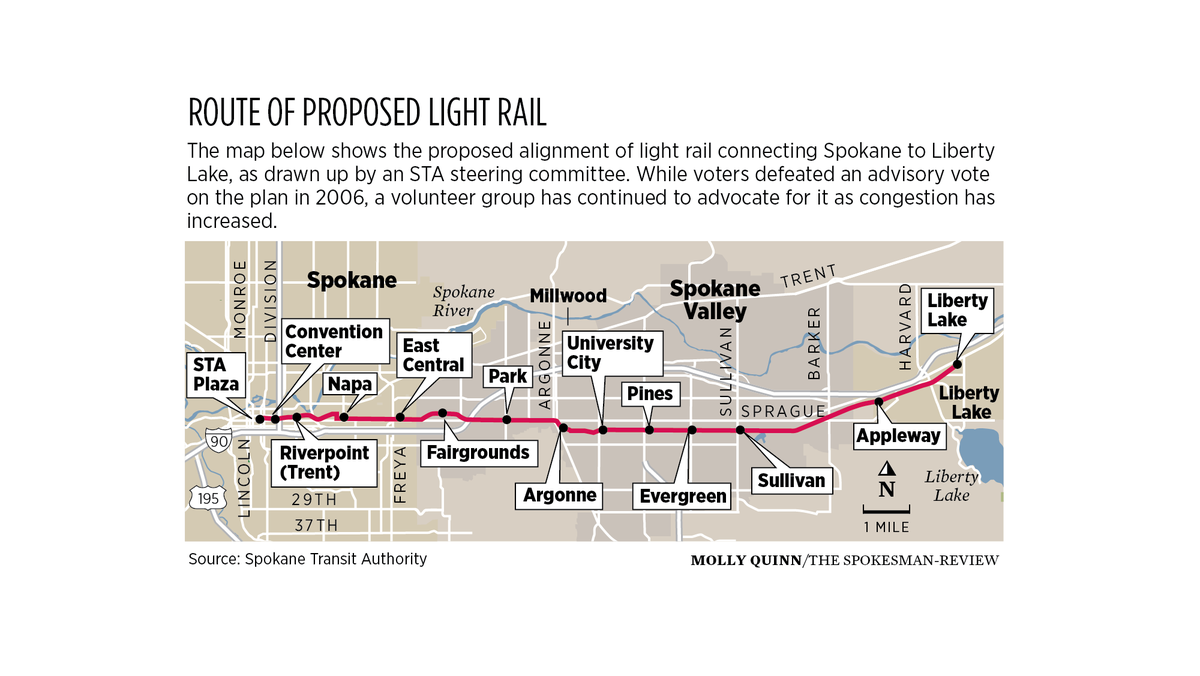WA: Getting There: Can Spokane's light rail effort be revived?
Spokesman-Review
Mon., Aug. 16, 2021
By Ted McDermott
 Image courtesy of the Spokesman-Review.
Image courtesy of the Spokesman-Review.
"When Dick Raymond walked into the first meeting about the possibility of light rail in Spokane, he was, like many, more than a little skeptical.
“I literally asked, ‘Why are we doing this?’ ” he said on Friday. “Because I thought it was a –”
Raymond was searching for a word, and his fellow members of the Inland Empire Rail Transit Association were happy to help him out.
“Boondoggle,” they agreed.
But that was more than two decades ago, in 2000, soon after the Spokane Transit Authority and the Spokane Regional Transportation Council created a light rail steering committee. That panel began considering the design and feasibility of a form of transit that was already well established in Portland and taking shape in Seattle..."
https://www.spokesman.com/stories/20...-effort-be-re/



